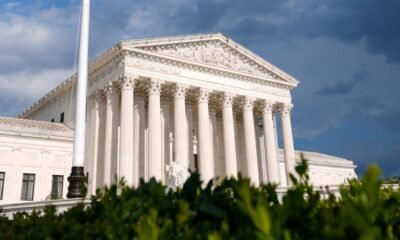crime
The Perilous Legacy of Good Friday: How the Middle Ages Threatened Jewish Communities

As Christians around the world observe Good Friday, they reflect on the significance of Jesus’ death on the Cross. This day evokes deep gratitude for the salvation afforded through His suffering and serves as a solemn reminder in preparation for the joyful celebration of Easter Sunday.
Historically, however, Good Friday has also been a time of peril for Jewish communities, particularly during the Middle Ages. Scholars examine this turbulent relationship, noting that since the fourth century, the Gospel of John’s account of Jesus’ trial and crucifixion has often been read during Good Friday services. This narrative frequently uses the term “the Jews” to implicate them in the conspiracy against Jesus, shifting blame from Roman authorities to Jewish people collectively.
During medieval Good Friday services, prayers were directed toward the “perfidious” Jews, beseeching God to reveal the truth of Jesus Christ to them. Worshippers would venerate a crucifix, while a chant known as “the Reproaches” accused the Jewish people of faithlessness for rejecting Jesus as their Messiah. This theological framing reinforced the narrative that Jews, present within the Christian communities, were enemies who bore the responsibility for Jesus’ death.
Such rhetoric frequently spiraled into violence against Jewish individuals and their property, often incited by local clergy. Scholars like David Nirenberg suggest that these violent acts were intended as reenactments of the suffering of Jesus, while Lester Little asserts they represented a ritualistic revenge for His death. Curiously, church doctrine mandated the protection of Jews and discouraged violence on Good Friday, which clashed starkly with local instances of brutality.
Even as civil authorities took measures to protect Jews, such as implementing armed guards, incidents of violence were not entirely averted. After the medieval period, while the overt violence diminished, the derogatory language used during Good Friday services persisted until the 20th century. Following the Holocaust, many Christian denominations recognized their own complicity in the widespread anti-Semitism that had facilitated such atrocities.
A pivotal moment arrived with the Second Vatican Council, held from 1962 to 1965, which redefined how the Roman Catholic Church engaged with the Jewish community. The resultant document, “Nostra Aetate,” disavowed the idea that Jews were responsible for Jesus’ death and condemned anti-Semitism in all forms. This marked the beginning of an intentional effort by the church to engage in dialogue and strengthen relationships with Jewish communities.
In the contemporary context, while some churches may still include the Reproaches in their services, the emphasis on negative language has notably lessened. Most Roman Catholic Good Friday services now feature prayers recognizing the enduring relationship between God and the Jewish people, replacing the prayer for their conversion.
Protestant denominations across Europe and North America have similarly embarked on revisions of their Holy Week services, aiming to eliminate anti-Jewish sentiments. Nevertheless, there remains significant work to be done, particularly within traditions such as the Episcopal Church, where the Gospel of John is still the sole authorized passion narrative for Good Friday. Retaining this reading may suggest a reluctance to fully grapple with its historical implications.
Despite these challenges, many within the Episcopal Church and across broader Christian communities actively promote reconciliation with Jewish neighbors. Notably, in October 2018, Christians united in solidarity with Jewish communities following the tragic shooting at the Tree of Life Synagogue in Pittsburgh. Yet, the quest for awareness and healing continues, as the legacy of historic hostility toward Jews remains embedded in certain Christian rituals and texts.


















